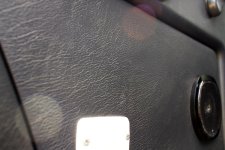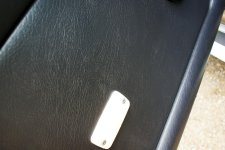Hi guys,
I`ve two questions which have been haunting me for years and for which I cannot seem to get an answer:
1. Why does everyone seem to find success in cleaning patterned plastic (e.g., door trims) via a single pass or two in a circular motion with a detailing brush (or paint brush, which I note have very similar textures) and APC, whereas I cannot seem to get the same plastics clean without a scrubbing (nail) brush (albeit used very lightly)? See the small sections of brownish crevices in the below photos (`browning` is more apparent in real life, and was especially so before cleaning the rest of the sections with a scrubbing brush):


2. Why do people use brushes as opposed to merely wiping the plastic with a MF towel? Is this because most car plastics are impressed with a pattern with inherent grooves/crevices (as above) which towels may not contact with?
L.
I`ve two questions which have been haunting me for years and for which I cannot seem to get an answer:
1. Why does everyone seem to find success in cleaning patterned plastic (e.g., door trims) via a single pass or two in a circular motion with a detailing brush (or paint brush, which I note have very similar textures) and APC, whereas I cannot seem to get the same plastics clean without a scrubbing (nail) brush (albeit used very lightly)? See the small sections of brownish crevices in the below photos (`browning` is more apparent in real life, and was especially so before cleaning the rest of the sections with a scrubbing brush):
- Ie, the `brown` colour found in many of the crevices in the pattern on the plastic does not come out otherwise.
- My brother thinks the `brown` colour of the doors is either UV damage or the dye in the plastic discolouring, as opposed to brown `dirt`
- Subject car is a 24 year-old SUV.
2. Why do people use brushes as opposed to merely wiping the plastic with a MF towel? Is this because most car plastics are impressed with a pattern with inherent grooves/crevices (as above) which towels may not contact with?
L.


